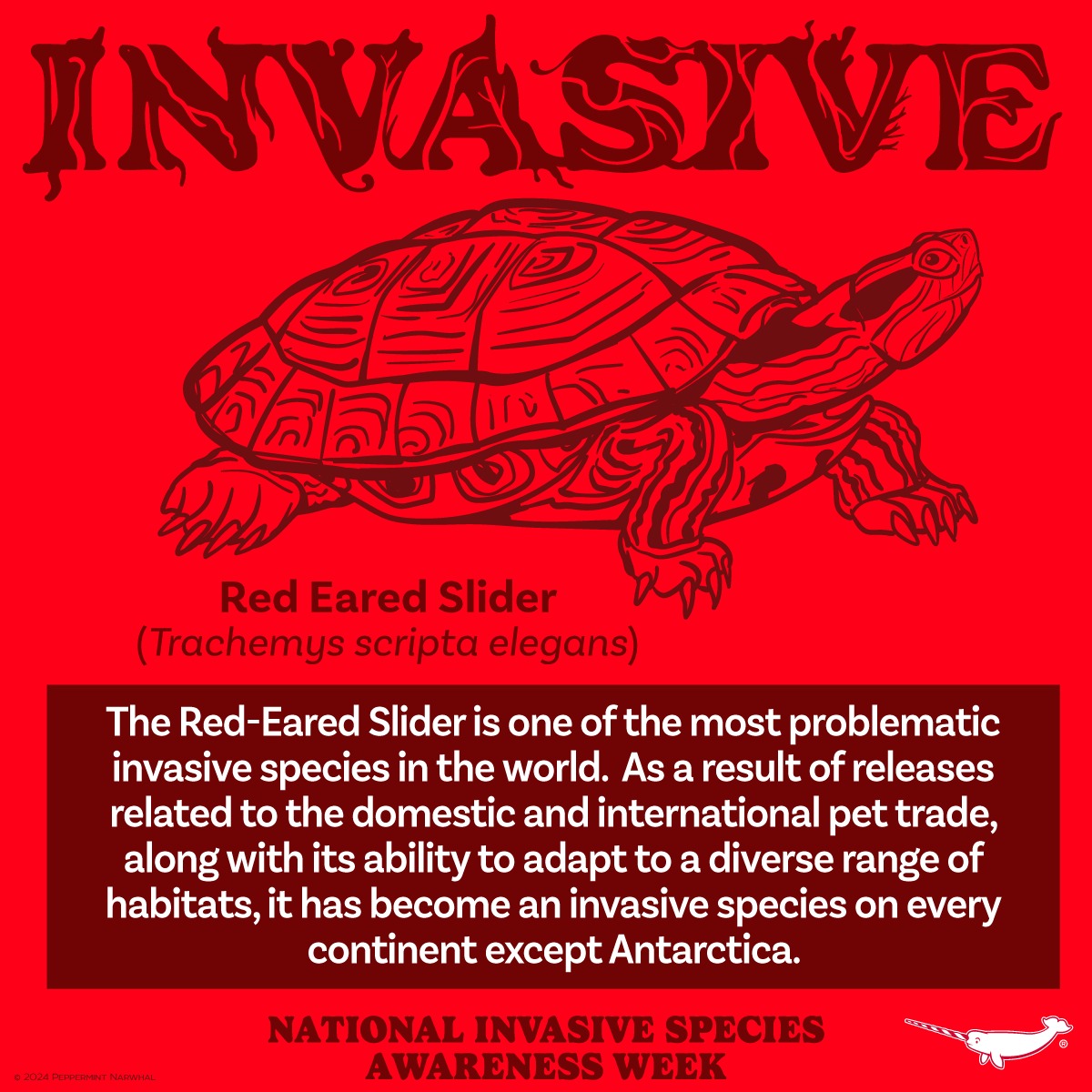National Invasive Species Awareness Week, from February 26 through March 3, 2024, represents a critical juncture in our collective efforts to acknowledge and combat the pervasive problem of invasive species across the United States and globally. This period is dedicated to increasing public understanding, fostering community involvement, and highlighting the scientific progress in invasive species management. The significance of this endeavor cannot be overstressed, as invasive species pose a formidable threat to biodiversity, ecosystem health, and economic stability.
Key Points:
1. **Understanding Invasive Species**: A comprehensive look at what constitutes an invasive species, the mechanisms they spread, and their impacts on native ecosystems and species.
2. **The Red-Eared Slider as a Case Study**: Examining the ecological, economic, and societal ramifications of one of the most prolific invasive species, the Red-Eared Slider (Trachemys scripta elegans).
3. **Management and Control Measures**: Discussion of current strategies, both successful and challenging, employed in the fight against invasive species, with a particular focus on the Red-Eared Slider.
4. **Community Engagement and Prevention**: Understanding the role of community involvement in the prevention and management of the spread of invasive species, including education, regulation, and citizen science initiatives.
Invasive species, which are non-native organisms that cause harm to their new environment, are a significant ecological, economic, social, and cultural problem. Adapting invasive species to their novel ecosystems, rapid reproduction rates, and the lack of natural predators contribute to their spread and impact. The Red-Eared Slider turtle, Trachemys scripta elegans, is a well-known example of a widespread invasive species that has infiltrated ecosystems across the globe, leading to significant threats to local biodiversity and ecosystem functioning. The introduction of Red-Eared Sliders to non-native habitats is primarily due to their popularity in the pet trade, and owners often release them when they can no longer care for them.
Controlling and managing invasive species like the Red-Eared Slider is a monumental task that requires scientific research, policy implementation, and community involvement. Physical removal, habitat modification, public education campaigns, trapping, and euthanasia have been employed to prevent pet release and control invasive populations. However, these efforts require significant resources and continuous maintenance effort.
Prevention is arguably the most sustainable solution to the problem of invasive species. Preventive measures include stringent controls on the pet trade, public education campaigns to discourage pet release, and community science projects that monitor and report sightings of invasive species. Engaging the public in understanding the consequences of releasing non-native species into the wild can significantly reduce new introductions. National Invasive Species Awareness Week and community events are crucial in raising awareness and fostering a collective spirit of environmental stewardship.
In conclusion, invasive species pose a significant challenge to environmental sustainability, but it is not impossible to mitigate their impacts. We need dedicated research, strategic management efforts, and widespread public engagement to protect our natural ecosystems for future generations.
*****
Source Description
February 26 – March 3, 2024 is National Invasive Species Awareness Week.
Invasive – Red Eared Slider (Trachemys scripta elegans)
The Red-Eared Slider is one of the most problematic invasive species in the world. As a result of releases related to the domestic and international pet trade, along with its ability to adapt to a diverse range of habitats, it has become an invasive species on every continent except Antarctica.
Stay connected with us all this week to learn more about animals that have become problematic invasive species in the USA.
Shop www.peppermintnarwhal.com


